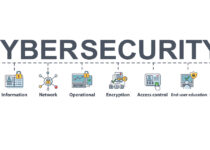Innovations and Breakthroughs: Climate Change Technologies Shaping a Sustainable Future
Introduction
Climate change is one of the most pressing challenges of our time, with far-reaching consequences for the planet’s ecosystems, economies, and human societies. As the world grapples with the urgent need to mitigate and adapt to climate change, innovative technologies are playing a crucial role in shaping a sustainable future. This article explores some of the cutting-edge climate change technologies that offer hope in the battle against environmental degradation, rising temperatures, and the depletion of natural resources.
Renewable Energy Technologies
- Solar Power: Solar energy stands as a beacon of hope in the quest for clean and sustainable power sources. Advances in solar panel technology have increased efficiency and reduced costs, making solar energy more accessible. Beyond traditional photovoltaic cells, innovations like transparent solar cells for windows and solar paint are pushing the boundaries of solar applications.
- Wind Energy: Wind turbines continue to evolve, with advancements in blade design, materials, and offshore wind farm technologies. Floating wind turbines, in particular, are expanding the possibilities for harnessing wind energy in deep-sea locations. Artificial intelligence (AI) is also being employed to optimize the performance and efficiency of wind farms.
- Hydropower Innovations: Traditional hydropower has been supplemented by innovative technologies such as marine energy systems and tidal stream generators. Small-scale hydropower solutions are being implemented in rivers and canals, contributing to decentralized energy generation.
- Geothermal Energy: Geothermal energy taps into the Earth’s heat for power generation and heating. Enhanced geothermal systems (EGS) and closed-loop geothermal technologies are improving efficiency and expanding the geographic range where geothermal energy can be harnessed.

Energy Storage Technologies
- Battery Technology Breakthroughs: Advances in battery technologies are pivotal for the widespread adoption of renewable energy. Lithium-ion batteries are undergoing improvements, while next-generation technologies like solid-state batteries and flow batteries offer higher energy density, longer lifespans, and enhanced safety.
- Grid-Scale Energy Storage: The integration of energy storage solutions at the grid scale is crucial for balancing the intermittency of renewable energy sources. Technologies such as compressed air energy storage (CAES), pumped hydro storage, and advanced flywheel systems are helping to stabilize energy grids.

Carbon Capture and Storage (CCS)
- Direct Air Capture (DAC): DAC technologies are designed to remove carbon dioxide directly from the atmosphere. These systems utilize chemical processes to capture CO2, and the captured carbon can be stored underground or utilized for various industrial applications.
- Bioenergy with Carbon Capture and Storage (BECCS): BECCS combines bioenergy production with carbon capture, offering a dual benefit of renewable energy generation and carbon sequestration. Biomass plants capture and store more carbon dioxide than they release, contributing to a net reduction in atmospheric CO2 levels.
- Enhanced Weathering: This emerging technology involves accelerating natural weathering processes to absorb CO2. By spreading minerals like olivine on land or in the ocean, weathering reactions take place, locking carbon dioxide in stable compounds.
Adaptation Technologies
- Climate-Resilient Agriculture: Agricultural practices are adapting to climate change through the use of precision farming, drought-resistant crops, and climate-resilient seeds. Satellite technology and AI are also employed to monitor and optimize agricultural processes.
- Climate-Resilient Infrastructure: The development of infrastructure capable of withstanding the impacts of climate change is crucial. Innovations include resilient building materials, smart infrastructure design, and nature-based solutions such as green roofs and permeable pavements.
- Early Warning Systems: Advanced climate modeling and data analytics contribute to the development of early warning systems for extreme weather events. These systems help communities prepare for and respond to floods, hurricanes, and other climate-related disasters.
- Water Management Technologies: Water scarcity is a growing concern, and technologies like smart irrigation systems, desalination, and water recycling play essential roles in sustainable water management.

Nature-Based Solutions of Climate change
- Afforestation and Reforestation: Planting trees and restoring forests not only sequesters carbon but also contributes to biodiversity conservation and ecosystem restoration. Drone technology and satellite imagery aid in large-scale afforestation efforts.
- Blue Carbon Solutions: Coastal ecosystems, including mangroves, seagrasses, and salt marshes, are valuable carbon sinks. Blue carbon initiatives focus on conserving and restoring these ecosystems to enhance carbon sequestration.
- Regenerative Agriculture: Going beyond sustainable practices, regenerative agriculture aims to improve soil health, enhance biodiversity, and sequester carbon. Techniques like cover cropping, rotational grazing, and agroforestry contribute to building resilient agricultural systems.
Technological Integration and Cross-Cutting Solutions
- Artificial Intelligence for Climate Solutions: AI is increasingly being used to analyze vast datasets, optimize energy systems, and model climate scenarios. Machine learning algorithms help in predicting extreme weather events, optimizing renewable energy production, and improving the efficiency of various climate-related processes.
- Blockchain for Sustainable Supply Chains: Blockchain technology enhances transparency and traceability in supply chains, ensuring that products meet sustainability standards. It is particularly useful in verifying the authenticity of eco-friendly certifications and tracking the carbon footprint of goods.
- Circular Economy Practices: Adopting circular economy principles involves minimizing waste and maximizing the longevity of products. Technologies like 3D printing, remanufacturing, and recycling innovations contribute to creating a more sustainable and circular economy.

Policy and Societal Considerations
- Carbon Pricing Mechanisms: Implementing carbon pricing, through methods like carbon taxes or cap-and-trade systems, incentivizes businesses and individuals to reduce their carbon footprint. These mechanisms promote the transition to low-carbon technologies and energy sources.
- Community-Based Initiatives: Empowering local communities to engage in sustainable practices and adopt green technologies is crucial for widespread impact. Community solar projects, decentralized energy solutions, and localized climate adaptation efforts promote inclusivity in addressing climate challenges.
Conclusion:
The journey towards a sustainable future is intricately linked to the continuous evolution and integration of climate change technologies. The innovative solutions explored in this article showcase the depth and breadth of human ingenuity, offering a glimpse into a world where resilience, adaptability, and responsible resource management are paramount.
As we conclude this exploration of climate change technologies, it is clear that no single technology can provide a panacea for the complex challenges posed by climate change. Instead, it is the collaborative efforts of scientists, engineers, policymakers, communities, and individuals that will pave the way for a more sustainable and climate-resilient world.
One of the defining aspects of these technologies is their interconnectedness. The synergy between renewable energy sources, energy storage, carbon capture, and adaptation strategies creates a holistic approach to addressing the multifaceted aspects of climate change. The integration of artificial intelligence, blockchain, and circular economy practices further amplifies the potential for transformative change.
Policy frameworks play a pivotal role in steering the trajectory of climate change technologies. Carbon pricing mechanisms incentivize the adoption of cleaner technologies, while community-based initiatives ensure that the benefits of sustainable practices are shared inclusively. It is imperative that governments, industries, and international bodies work in tandem to create a conducive environment for the deployment and scaling of these technologies.
However, as we celebrate the progress made in the realm of climate change technologies, it is equally important to acknowledge the challenges that persist. Issues of scalability, accessibility, and the ethical considerations surrounding certain technologies demand ongoing attention. Furthermore, the urgency of the climate crisis necessitates accelerated efforts to implement these solutions on a global scale.
The role of education and awareness cannot be overstated. Public understanding of climate change technologies is crucial for fostering support, encouraging responsible consumption, and driving demand for sustainable solutions. Inclusivity in technological adoption is paramount, ensuring that the benefits reach communities across the socio-economic spectrum.
Ultimately, the adoption and impact of climate change technologies extend beyond the realm of scientific advancements; they embody a collective responsibility. As stewards of the planet, it is our duty to embrace these technologies, advocate for sustainable practices, and participate in the global dialogue on climate action.
In conclusion, the landscape of climate change technologies is dynamic, promising, and brimming with potential. It is a testament to the capacity of human innovation to address the challenges posed by climate change. As we stand at the intersection of technology and sustainability, the choices we make today will shape the course of our shared future. Through collaboration, determination, and a steadfast commitment to the well-being of our planet, we can build a legacy of resilience and environmental stewardship for generations to come.



